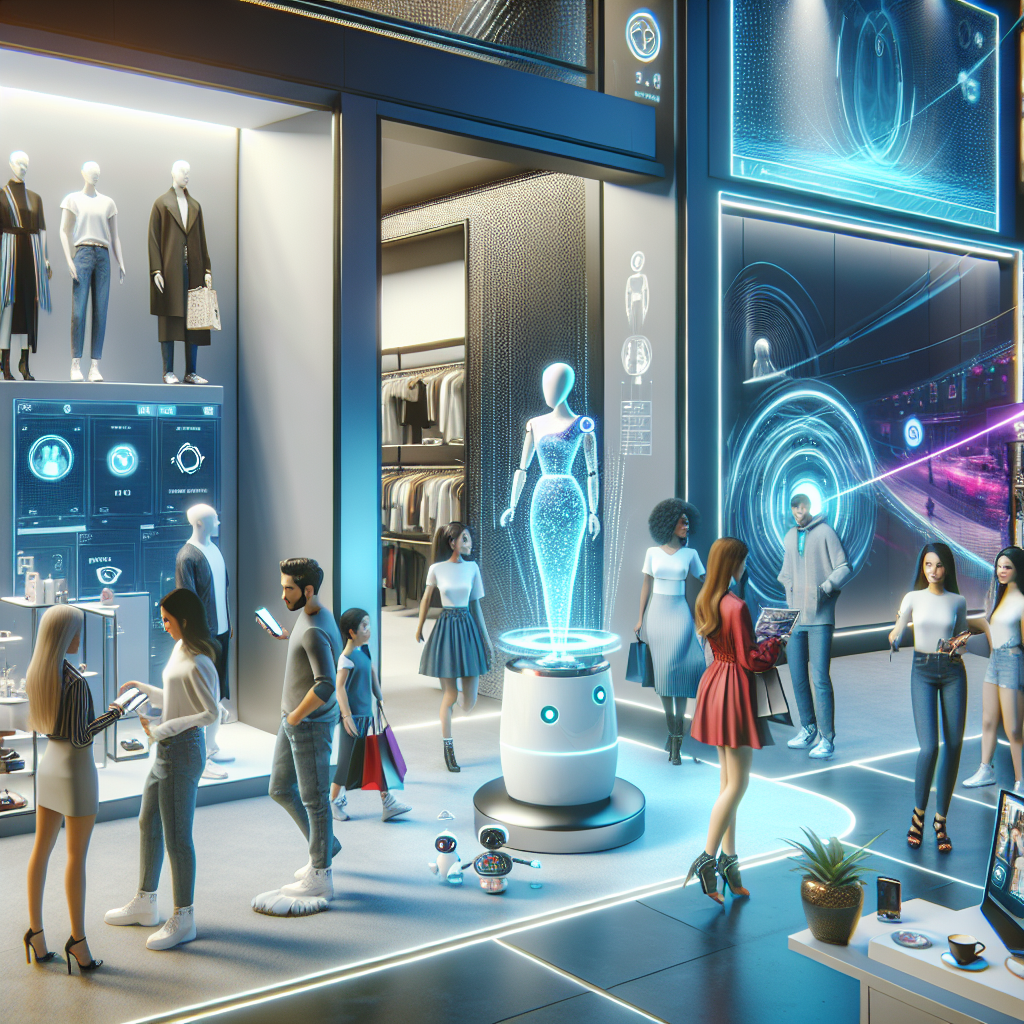The Future of AI-Powered Fashion Retail Customer Service: Virtual Assistants and Chatbots
In recent years, artificial intelligence (AI) has been transforming various industries, including the fashion retail sector. One particular area where AI is making a significant impact is in customer service, with the rise of virtual assistants and chatbots. These AI-powered tools are revolutionizing the way fashion retailers interact with their customers, providing personalized and efficient service that can help drive sales and build brand loyalty. In this article, we will explore the future of AI-powered fashion retail customer service, focusing on virtual assistants and chatbots.
Virtual Assistants in Fashion Retail
Virtual assistants are AI-powered tools that can interact with customers in a natural language interface, providing personalized recommendations, answering queries, and assisting with the purchase process. In the fashion retail sector, virtual assistants can help customers find the right products, suggest styling tips, and provide information on sizing, materials, and availability. They can also offer personalized recommendations based on a customer’s browsing and purchase history, helping to enhance the shopping experience and increase sales.
One of the key advantages of virtual assistants in fashion retail is their ability to provide 24/7 customer service. Customers can interact with virtual assistants at any time of the day or night, without having to wait for a human agent to be available. This can help to improve customer satisfaction and retention, as customers can get the assistance they need quickly and easily. Virtual assistants can also handle a large volume of queries simultaneously, helping to reduce wait times and improve efficiency.
Another benefit of virtual assistants in fashion retail is their ability to learn and improve over time. By analyzing customer interactions and feedback, virtual assistants can continuously enhance their algorithms and provide more accurate and relevant recommendations. This can help to create a more personalized shopping experience for customers, leading to increased sales and loyalty.
Chatbots in Fashion Retail
Chatbots are another AI-powered tool that is becoming increasingly popular in the fashion retail sector. Chatbots are computer programs that can simulate conversations with customers in real-time, providing instant responses to queries and guiding customers through the purchase process. Chatbots can be integrated into a retailer’s website or mobile app, allowing customers to interact with them seamlessly as they shop online.
One of the key advantages of chatbots in fashion retail is their ability to provide instant responses to customer queries. Customers can ask questions about products, promotions, shipping, and returns, and receive immediate answers from the chatbot. This can help to improve the overall shopping experience and reduce the likelihood of customers abandoning their purchase due to unanswered questions.
Chatbots can also help to drive sales by providing personalized product recommendations based on a customer’s preferences and browsing history. By analyzing customer data and behavior, chatbots can suggest relevant products that are likely to appeal to the customer, increasing the chances of a successful purchase. This can help to boost revenue and improve customer satisfaction, as customers are more likely to find products that meet their needs and preferences.
The Future of AI-Powered Fashion Retail Customer Service
The future of AI-powered fashion retail customer service is bright, with virtual assistants and chatbots playing an increasingly important role in enhancing the shopping experience for customers. As AI technology continues to advance, we can expect to see even more sophisticated and intelligent virtual assistants and chatbots that can provide personalized and seamless service to customers.
One key trend that is likely to emerge in the future is the integration of virtual assistants and chatbots with other AI technologies, such as visual search and recommendation engines. By combining these technologies, fashion retailers can offer a more immersive and personalized shopping experience to customers, helping them find the products they are looking for more easily and quickly.
Another trend that is likely to shape the future of AI-powered fashion retail customer service is the use of voice-activated virtual assistants. With the growing popularity of smart speakers and voice assistants such as Amazon Alexa and Google Assistant, fashion retailers can leverage voice technology to provide a more convenient and hands-free shopping experience to customers. Customers can use voice commands to search for products, add items to their cart, and complete their purchase, without having to type or click through a website.
FAQs
Q: Are virtual assistants and chatbots replacing human customer service agents in fashion retail?
A: Virtual assistants and chatbots are not replacing human customer service agents in fashion retail, but rather complementing them. While virtual assistants and chatbots can handle a large volume of queries and provide instant responses, human agents are still needed for more complex and personalized interactions with customers.
Q: How can fashion retailers ensure that virtual assistants and chatbots provide accurate and relevant information to customers?
A: Fashion retailers can ensure that virtual assistants and chatbots provide accurate and relevant information to customers by continuously monitoring and analyzing customer interactions and feedback. By training the AI algorithms with high-quality data and regularly updating them with new information, retailers can improve the accuracy and relevance of the recommendations provided by virtual assistants and chatbots.
Q: How can fashion retailers measure the success of their virtual assistants and chatbots in customer service?
A: Fashion retailers can measure the success of their virtual assistants and chatbots in customer service by analyzing key performance indicators such as response time, resolution rate, customer satisfaction, and sales conversion. By tracking these metrics and comparing them against benchmarks, retailers can assess the effectiveness of their AI-powered tools and make improvements as needed.

